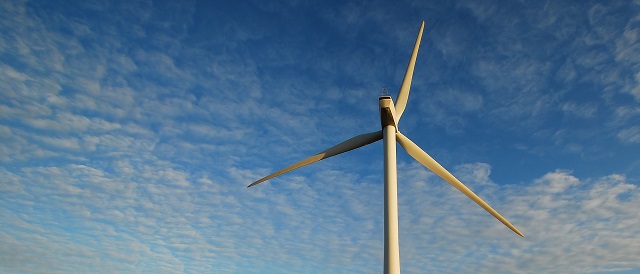Uncategorized
Biden Admin Energy Policies Putting Americans Further At Risk In Potential War With China, Analysis Finds

 From the Daily Caller News Foundation
From the Daily Caller News Foundation
By NICK POPE
The environmental, social and corporate governance (ESG) movement is undermining U.S. energy security by artificially sapping demand for new refining projects, even though demand for fossil fuels and petrochemicals remains strong and could grow stronger in the event of a prolonged military conflict.
America’s energy systems and infrastructure may be currently unprepared to sustain a wartime economy in the event of a hot war with China, thanks in part to the Biden administration’s green policies, according to a new report published by the Heritage Foundation.
The report, published Thursday and titled “Chinese Handcuffs: Don’t Allow the U.S. Military to Be Hooked on Green Energy from China,” examines the state of American energy security and resilience in a potential war with China, taking stock of markets at home and overseas. The paper emphasizes the need for American policymakers to get ahead of any possible conflict with China by ensuring that the U.S. military has a robust and secure supply of traditional energy available, rolling back certain environmental regulations and targets pushed by the Biden administration, building more strategic energy infrastructure and bolstering existing commercial relationships with friendly countries, all of which may heighten deterrence with an adversarial country considering escalation with the U.S.
“Due to a heavy reliance on foreign sources, poor policy choices, and constraints on the transport of fuels, the U.S. military could be vulnerable,” the report states. “The risk is for localized fuel shortages, global supply disruptions, and Chinese economic coercion during a conflict driving significantly increased energy demands.”
Brent Sadler, the report’s author and a 26-year U.S. Navy veteran who now works as a senior research fellow for naval warfare and advanced technology at the Heritage Foundation, further emphasized that while steps to heighten America’s energy security will be expensive and require political will, they are necessary measures to ensure that the U.S. can transition to and sustain a wartime footing against near-peer competitors like China. Numerous pundits and ex-military personnel have suggested that China is getting ready for a war to start in the coming years, whether in Taiwan or in the South China Sea.
“America’s energy network is brittle in some regions and unable to adjust easily to surges in demand,” the report states. “In wartime, the consequences of such weaknesses could be an inability to sustain military combat operations and the inability of wartime industry to keep America safe. On the other hand, readiness for this possibility could be a significant advantage, enabling the United States to deter China by confronting it with a foe that is able to wage a prolonged war backed by a resilient wartime economy.”
The insistence of some federal and state officials — particularly Democrats — on transitioning the American economy to reliance on green energy poses a major problem for American security, the report asserts. Additionally, the environmental, social and corporate governance (ESG) movement is undermining U.S. energy security by artificially sapping demand for new refining projects, even though demand for fossil fuels and petrochemicals remains strong and could grow stronger in the event of a prolonged military conflict.
The Biden administration has pledged to invest at least $1 trillion over the next decade to advance its massive climate agenda, and federal agencies have pushed stringent regulations and taken other bureaucratic actions targeting the broader American energy sector. The administration is also looking to make the military a more climate-friendly organization, including by seeking to have the Department of Defense (DOD) transition its non-tactical vehicle fleet to electric models by 2030.
Additionally, the supply chains for many of the green energy technologies favored by the Biden administration are dominated by China, the report points out. Numerous energy and national security experts have highlighted that retiring existing energy infrastructure in favor of products reliant on China-dominated supply chains is likely to make America more vulnerable, particularly in the event of an acute geopolitical crisis.
One specific element of the American energy system in need of change is the Strategic Petroleum Reserve (SPR), a de facto emergency supply of oil stored in underground caverns along the Gulf Coast established in the 1970s amid an energy crisis, according to the report. Sadler recommends that policymakers begin to treat the SPR as a key tool for the military to use in the event of war, given China’s rise, as well as improving energy transportation infrastructure to more easily get SPR supply to coastal regions where the military can use it expediently.
The Biden administration has used the SPR as a tool for manipulating markets, as officials decided to release approximately 180 million barrels from the stockpile to bring down spiking energy costs ahead of the 2022 midterm elections. Several million of those barrels were sold to Chinese entities, and the administration has subsequently floated the possibility of again tapping into the SPR ahead of the pivotal 2024 elections while the reserve remains at its lowest levels in about 40 years, according to the U.S. Energy Information Administration.
Stadler calculated that the SPR’s current inventory would need a boost of about 55 million more barrels in order to single-handedly supply the amount of oil that U.S. forces used in Operation Desert Storm in 1990.
Deliberate policy choices and infrastructure upgrades are needed to make sure that the U.S. is able to effectively fight China in a prolonged conflict, Stadler contends in the report. Making these adjustments would help to provide an advantage over potential adversaries like China that rely on energy imports, according to Stadler.
Beyond SPR-related adjustments, the report also identifies an urgent need to unleash refiners and build out more pipeline capacity in light of China’s possible ability to launch highly disruptive cyber attacks against key pipeline and shipping infrastructure.
Additionally, Stadler emphasizes the importance of strengthening relationships with energy-rich countries that could be key sources of energy for American forces around the world in the event of a hot war with China. While several memoranda of understanding are in place with such countries, Stadler suggests that U.S. officials should move to elevate these agreements to treaty status to enhance America’s standing with those countries and decrease China’s ability to pressure third-party countries against assisting American forces.
“This is especially true for scenarios in which a major war disrupts overseas energy markets and normal shipping methods. Under such conditions, the U.S. will need more diverse and reliable overseas suppliers for military operations,” the report states. “Given the global impact that a war with China would have, the U.S. urgently needs to ensure that it has enough fuel stocks and crude oil to allow it time to adjust to a wartime footing.”
Neither the White House nor DOD responded immediately to requests for comment.
Uncategorized
Cost of bureaucracy balloons 80 per cent in 10 years: Public Accounts

The cost of the bureaucracy increased by $6 billion last year, according to newly released numbers in Public Accounts disclosures. The Canadian Taxpayers Federation is calling on Prime Minister Mark Carney to immediately shrink the bureaucracy.
“The Public Accounts show the cost of the federal bureaucracy is out of control,” said Franco Terrazzano, CTF Federal Director. “Tinkering around the edges won’t cut it, Carney needs to take urgent action to shrink the bloated federal bureaucracy.”
The federal bureaucracy cost taxpayers $71.4 billion in 2024-25, according to the Public Accounts. The cost of the federal bureaucracy increased by $6 billion, or more than nine per cent, over the last year.
The federal bureaucracy cost taxpayers $39.6 billion in 2015-16, according to the Public Accounts. That means the cost of the federal bureaucracy increased 80 per cent over the last 10 years. The government added 99,000 extra bureaucrats between 2015-16 and 2024-25.
Half of Canadians say federal services have gotten worse since 2016, despite the massive increase in the federal bureaucracy, according to a Leger poll.
Not only has the size of the bureaucracy increased, the cost of consultants, contractors and outsourcing has increased as well. The government spent $23.1 billion on “professional and special services” last year, according to the Public Accounts. That’s an 11 per cent increase over the previous year. The government’s spending on professional and special services more than doubled since 2015-16.
“Taxpayers should not be paying way more for in-house government bureaucrats and way more for outside help,” Terrazzano said. “Mere promises to find minor savings in the federal bureaucracy won’t fix Canada’s finances.
“Taxpayers need Carney to take urgent action and significantly cut the number of bureaucrats now.”
Table: Cost of bureaucracy and professional and special services, Public Accounts
| Year | Bureaucracy | Professional and special services |
|
$71,369,677,000 |
$23,145,218,000 |
|
|
$65,326,643,000 |
$20,771,477,000 |
|
|
$56,467,851,000 |
$18,591,373,000 |
|
|
$60,676,243,000 |
$17,511,078,000 |
|
|
$52,984,272,000 |
$14,720,455,000 |
|
|
$46,349,166,000 |
$13,334,341,000 |
|
|
$46,131,628,000 |
$12,940,395,000 |
|
|
$45,262,821,000 |
$12,950,619,000 |
|
|
$38,909,594,000 |
$11,910,257,000 |
|
|
$39,616,656,000 |
$11,082,974,000 |
Uncategorized
New report warns WHO health rules erode Canada’s democracy and Charter rights

The Justice Centre for Constitutional Freedoms has released a new report titled Canada’s Surrender of Sovereignty: New WHO health regulations undermine Canadian democracy and Charter freedoms. Authored by Nigel Hannaford, a veteran journalist and researcher, the report warns that Canada’s acceptance of the World Health Organization’s (WHO) revised International Health Regulations (IHR) represents a serious erosion of national independence and democratic accountability.
The IHR amendments, which took effect on September 19, 2025, authorize the WHO Director-General to declare global “health emergencies” that could require Canada to follow directives from bureaucrats in Geneva, bypassing the House of Commons and the will of Canadian voters.
The WHO regards these regulations as “binding,” despite having no ability or legal authority to impose such regulations. Even so, Canada is opting to accept the regulations as binding.
By accepting the WHO’s revised IHR, the report explains, Canada has relinquished its own control over future health crises and instead has agreed to let the WHO determine when a “pandemic emergency” exists and what Canada must do to respond to it, after which Canada must report back to the WHO.
In fact, under these International Health Regulations, the WHO could demand countries like Canada impose stringent freedom-violating health policies, such as lockdowns, vaccine mandates, or travel restrictions without debate, evidence review, or public accountability, the report explains.
Once the WHO declares a “Pandemic Emergency,” member states are obligated to implement such emergency measures “without delay” for a minimum of three months.
Importantly, following these WHO directives would undermine government accountability as politicians may hide behind international “commitments” to justify their actions as “simply following international rules,” the report warns.
Canada should instead withdraw from the revised IHR, following the example of countries like Germany, Austria, Italy, Czech Republic, and the United States. The report recommends continued international cooperation without surrendering control over domestic health policies.
Constitutional lawyer Allison Pejovic said, “[b]y treating WHO edicts as binding, the federal government has effectively placed Canadian sovereignty on loan to an unelected international body.”
“Such directives, if enforced, would likely violate Canadians’ Charter rights and freedoms,” she added.
Mr. Hannaford agreed, saying, “Canada’s health policies must be made in Canada. No free and democratic nation should outsource its emergency powers to unelected bureaucrats in Geneva.”
The Justice Centre urges Canadians to contact their Members of Parliament and demand they support withdrawing from the revised IHR to restore Canadian sovereignty and reject blind compliance with WHO directives.
-

 C2C Journal1 day ago
C2C Journal1 day agoWisdom of Our Elders: The Contempt for Memory in Canadian Indigenous Policy
-

 Sports1 day ago
Sports1 day agoEgypt, Iran ‘completely reject’ World Cup ‘Pride Match’ plan
-

 Alberta1 day ago
Alberta1 day agoAlberta introducing three “all-season resort areas” to provide more summer activities in Alberta’s mountain parks
-

 Business2 days ago
Business2 days agoStorm clouds of uncertainty as BC courts deal another blow to industry and investment
-

 Business11 hours ago
Business11 hours agoTaxpayers Federation calls on politicians to reject funding for new Ottawa Senators arena
-

 Automotive1 day ago
Automotive1 day agoThe $50 Billion Question: EVs Never Delivered What Ottawa Promised
-

 Business11 hours ago
Business11 hours agoAlbertans give most on average but Canadian generosity hits lowest point in 20 years
-

 Crime1 day ago
Crime1 day agoU.S. seizes Cuba-bound ship with illicit Iranian oil history




